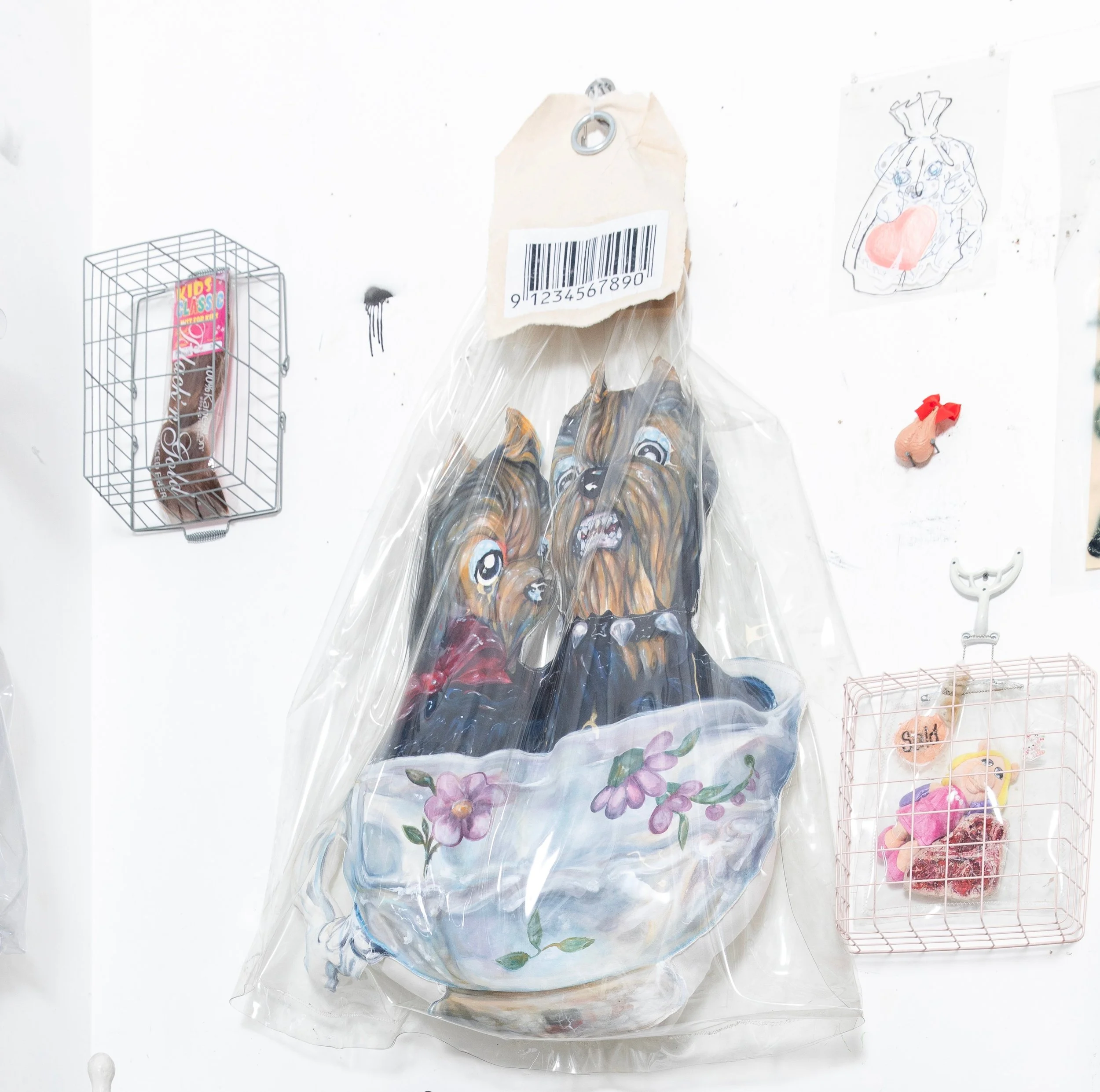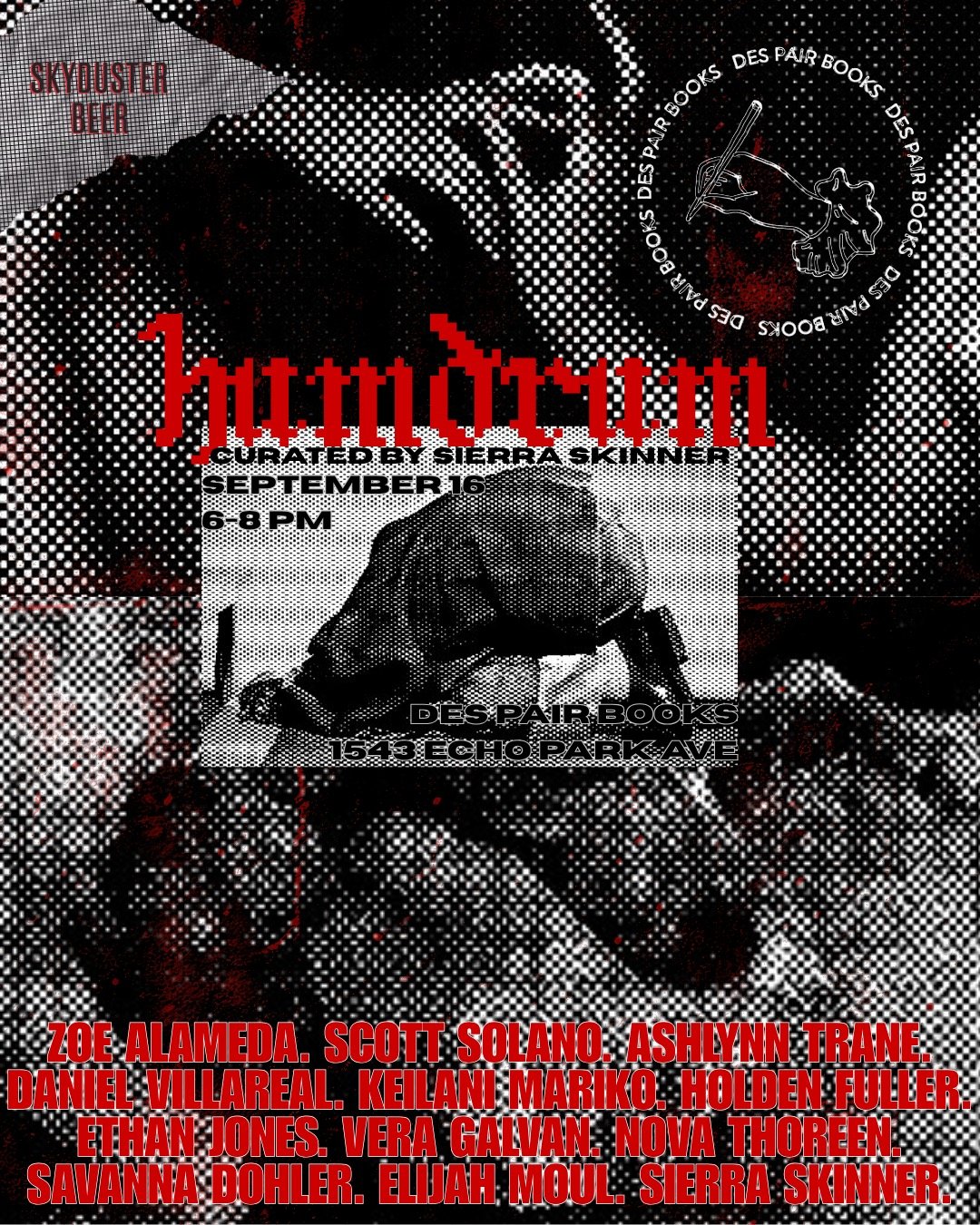Humdrum Artist Series: Ashlynn Trane
‘Humdrum’ is a series of profiles on twelve of Los Angeles’ finest up and coming multimedia artists, reflecting the roster of the group art show of the same name opening at des pair books in Echo Park on September 16th.
I don’t know if it needs to be said, but I’ll say it anyway: you should be at that opening. Not only because the art is good and worth finding parking, but because print is important, physical space is important, and supporting artists is important, and by attending, you knock out all three. Plus, you get the benefit of seeing Ashlynn Trane’s work, which is in fact quite good.
Her work is a mixture of sculpture, photo-surrealism, and painting that re-contextualizes the ways in which we associate (and disassociate) ideas of delicacy, femininity, and commodity. Her work is simultaneously challenging and uncannily understood, and pushes the line between the morose and the classically/commercially beautiful. It is good. Check it out.
How did you get started as an artist & how has your practice evolved to where you are now?
I’ve been drawing ever since I could pick up a crayon but refused to take art classes as a kid. So when I was about seven or eight my parents tricked me by pretending to take me to the dentist and instead dropped me off at an art class. I never wanted anyone to tell me how to make art. But developing a practice is not always a one-man job and I’ve learned to enjoy learning.
I used to cry when my drawings wouldn’t come out the way I saw them in my head. My mom said if art isn’t fun I’m not allowed to draw. I don’t cry anymore but I have remained insistent on satisfying my artistic urges. Part of the fun is figuring out how to piece it all together to capture the essence of an intangible idea or miraculously surpassing my insanely high expectations. The game got even better when I moved my practice into a studio space last year. Since then, every dimension has multiplied.
How does your creative process usually start? Does a vision or motive come first or do you find the meaning/end point as you work?
Art is my favorite form of communication. I’ll make something when I’ve decided I have a point to get across. I spend a fair amount of time researching, observing my surroundings, and ruminating on past experience. This informs the conceptual framework for each of my pieces. I like to know why I’m making something before it’s made.
Once I know why, I approach the what and how. This is when a vision emerges and I have to feel my way through the dark to bring it into reality. The vision usually only lasts about a millisecond and it’s often blurry or unresolved yet somehow unforgettable.
Have there been any significant feelings, experiences, or themes that have influenced your work?
The search for a proxy to my body led me to the motif that became continuously integral to my practice: the dog. The fellow “bitch” and beloved “man’s best friend” encapsulates the plight of bodily autonomy, domestication, capitalism, and beautification. Bred, sold, spayed, groomed, leashed, and trained to submit.
I became interested in the toy and teacup dog because they are iconic and virtually harmless, yet they reflect a vicious truth. If not curled up in the hands of a celebrity or tucked away in a purse, their image can be seen in the form of playful stickers, posters, and tchotchkes. Their man-made feeble figures exemplify the truest lack of autonomy. I do not call to nature, I only question our divergence from it.
“I used to cry when my drawings wouldn’t come out the way I saw them in my head. My mom said if art isn’t fun I’m not allowed to draw. I don’t cry anymore but I have remained insistent on satisfying my artistic urges.”
Los Angeles is a particularly intense and often uncomfortable place to be operating in. Do you feel like this pressure of perception and competition has affected your work or identity as an artist?
Fake and real are so intertwined that they have become difficult to distinguish. I don’t think this is unique to LA, but living here is the first time I’ve been in an environment that openly acknowledges this phenomenon as part of its nature. My work reflects how I’ve acclimatized—somewhere between protest and digestion.
After a few years of contending with the dissonance between performed perfection and authenticity, I have found that I am most honest when openly exploring my relationship to perfection. I do my best work when I’m honest. I feel much more comfortable now that I’ve given up on pretending.
What do you feel is lacking in the modern art scene and why?
Collaboration. I believe we are stronger than the sum of our parts.
What role does technology play in your practice and how might that change over time?
I find technology punctuates my practice. After I freely draw on a canvas, I’ll take a photo and overlay it with another image using a phone app I found years ago. I like to plan a composition this way because it provides a gridded roadmap. Once a piece is finished, I’m challenged with getting a good shot of it. Digital documentation provides a unique opportunity for me to control the context in which the work is seen.
As sharing work online has proliferated within the past decade, I am looking to strengthen my bond with the online art community. Sharing work on social media not only broadens the scope of my outreach, but is a gateway to learning about work I would have never seen without it.
Do you believe your work belongs to you or the viewer?
I like to say that my pieces are my babies. With that being said, my work belongs to me but has a life of its own. Each piece is inspired by my own experience but made to speak to a wider audience. Someday they’ll move away and find themselves in someone else’s life (with my blessing of course).
At what point do you believe a piece of work is ‘finished’?
At a certain point my hand won’t let me touch the work. I go into complete paralysis where all I can do is stare. I’m petrified of overworking something for fear of losing what I have.
“Humdrum” Artists:
Opening September 16th, on view through December at des pair books Echo Park.






